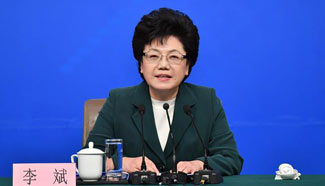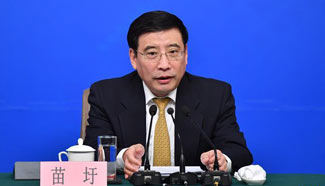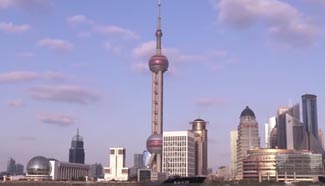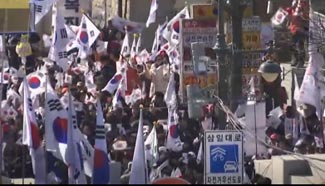TOKYO, March 11 (Xinhua) -- Japan has to learn lessons from the Fukushima disaster if it wants to go on using nuclear power, said Naohiro Masuda, head of the decommissioning unit of Tokyo Electric Power Company Holdings Inc.(TEPCO).
Looking back upon the disaster six years ago, Masuda said in an exclusive interview with Xinhua recently that TEPCO built the nuclear plant based on "national standards" but failed to take into consideration situations that were beyond the stipulations of such standards.
"The problem lies in the idea that just meeting the national standards is enough," he said, adding that TEPCO should have considered what if earthquakes or tsunamis larger than those stipulated in the national criteria occur.
He said that to prevent such a disaster from happening again, operators of nuclear plants should strengthen safety measures, such as building higher tsunami barriers and preparing more backup power sources.
What is also very important is the human element, such as the technical competence of the staff and a response mechanism in the face of a particular crisis, according to the TEPCO executive.
"Take car tires for example. It would be extremely difficult to make tires that have zero possibility of bursting. So what we should do is to equip ourselves with the ability and the instruments to stop the car safely and to change the tires when they puncture on the road," he said.
Likewise, a nuclear power plant should not begin operation without such strong capacities for safety control, and this is one of the lessons people should draw from the Fukushima distaster, he said.
TEPCO had been under fire for concealing from the public for two months that the core of the reactors had melted after the accident happened. Masuda said that it is easy to lose but very difficult to rebuild public trust and TEPCO should have made public all information as it has promised.
"This is another lesson that we shall reflect upon. It is very important to provide the public with information, including information about the concealment of the melted core," he said.
Six years on, decommissioning work for the damaged Fukushima No. 1 nuclear plant is still mired in difficulties, especially regarding the removal of highly radioactive residue of the melted nuclear fuel and to deal with the large amount of contaminated water.
Masuda said that the residue of melted nuclear fuel is now "mostly immersed in water" and kept at a relatively low temperature, and that there is "no need to worry" about the melted nuclear fuel residue eroding through the concrete bottom of the safety shell.
"Though we don't have direct confirmation about the concrete bottom of the safety shell, based on some other information, we think the residue has not eroded through the bottom... The bottom might have been eroded by fifty or sixty centimeters, but it is as thick as two or three meters, so there is no need to worry," he said.
He added that even if another earthquake of the same scale as the 2011 quake struck, the reactor units could still be kept cooled. But what he believes would impose a bigger problem would be a tsunami.
If a large enough tsunami occurred, contaminated water in the basement of the damaged reactor building could leak to the outside, he said, adding that TEPCO has been trying to deal with the radioactive water.
"The 2011 earthquake is what we called an outer-rise earthquake. There have been concerns that earthquake and tsunami of the same level could still occur as a result of the stress along the faults, and we have made preparations for situations like that," he said.
A magnitude-9.0 earthquake in 2011 triggered a massive tsunami in eastern Japan, which destroyed the emergency power and then the cooling system of Fukushima Daiichi nuclear power plant and caused a serious nuclear disaster, forcing some 300,000 people to evacuate.
The Fukushima nuclear disaster ranked seven, the highest level on the international nuclear events scale, and was the most serious one since the 1986 Chernobyl nuclear disaster.












